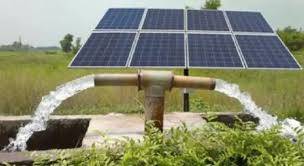
The Ministry of New and Renewable Energy (MNRE) has issued guidelines for implementation of feeder-level solarisation under Component-C of the PM-KUSUM Scheme. An official statement from MNRE said that based on discussions held with states it has been decided to also include feeder level solarisation under Component-C of PM-KUSUM Scheme.
PM-KUSUM scheme Component-C provides for solarisation of grid-connected agriculture pumps. After consultation with states, it was decided to also allow feeder-level solarisation under Component-C where instead of putting solar panels at each agriculture pump, a single solar power plant of capacity adequate to supply power to an agriculture feeder or multiple feeders will be installed.
Under the new guidelines, the power distribution company (discom) or power department will be the implementing agency for feeder-level solarisation in their respective areas. The State government may also appoint any other expert agency to help the discom in tendering and other related activities.
Agricultural feeders must be separated for being solarised under the scheme. “This will lead to lower-cost both in terms of capital and power. Feeders having major load for agriculture may also be considered for solarisation under the Scheme. The requirement of total annual power for an agriculture feeder will be assessed and a solar power plant of capacity that can cater to the requirement of annual power for that agriculture feeder can be installed,” an official statement said.
This will either be done through the CAPEX mode or the renewable energy service company (RESCO) mode, which will supply solar power to that feeder, the statement added.
It is assessed for a feeder having an annual power requirement of 10 lakh units, the power can be supplied by solar power plants of capacity around 600 kW with Capacity Utilisation Factor (CUF) of 19 per cent. Higher or lower CUF, depending upon the average solar insolation available in the areas, may be considered for assessing solar power capacity, the statement said.
In February 2019, the government had approved the launch of the Pradhan Mantri Kisan Urja Suraksha evam Utthaan Mahabhiyan (PM-KUSUM) scheme to provide financial and water security to farmers through harnessing solar energy capacities of 25.75 gigawatts (GW) by 2022.

















